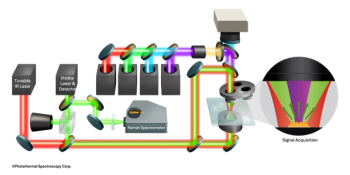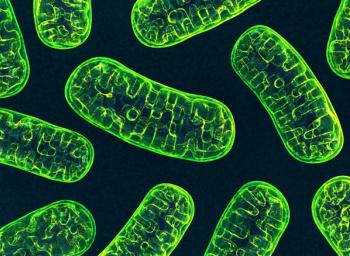
- The SciX 2021 Preview and Companion Guide
- Volume 36
- Issue S9A
Archaeological, Geochemical, and Remote Sensing Applications in the Search for Pleistocene Landscapes of New England
Here, a series of developing methods is presented for locating and analyzing deeply buried late Pleistocene archaeological sites, which includes the initial investigation of the geomorphology of a potential archaeological site with a suite of analytical geochemical techniques.
Recent archaeological work in southern New England has documented the presence of deeply buried late Pleistocene archaeological sites, preserved between three and six feet below the modern ground surface on alluvially buried terraces. One of these sites, the Brian D. Jones Site, was identified in 2019 and represents the oldest known archaeological site in southern New England, and has been radiocarbon dated to 10,520±30 uncalibrated years before present (BP) (1). The other, the Templeton Site, was identified over 40 years ago, and has recently been reinvestigated using modern excavation techniques; this site has been radiocarbon dated to 10,360±30 uncalibrated BP (2,3). The recent discovery of the Jones Site, the second deeply buried late Pleistocene site in Connecticut, necessitates a shift in the way archaeologists model and predict site location, as no other deeply buried sites have been previously found in New England. Here, a series of developing methods is presented for locating and analyzing deeply buried late Pleistocene archaeological sites, which includes the initial investigation of the geomorphology of a potential archaeological site with a suite of analytical geochemical techniques.
Prior to sedimentary investigations, remote sensing of landscapes using ground penetrating radar (GPR) and light detection and ranging (LIDAR) imaging of landforms provides a way to quickly assess a landform’s potential to contain buried paleosols and fluvially deposited sediments. A GSSI Utility Scan GPR system with a 350 MHz HyperStacking antenna is used to collect GPR transect data. The antenna and UtilityScan are mounted on a custom-built carriage by GSSI and utilize encoder-triggered collection of 50 traces per meter (one reading every 2 cm or 0.8 in). Data are collected in longitudinal transects (that are parallel and perpendicular to the terrace) to visualize the stratigraphy of a landform in three dimensions (Figure 1). LIDAR imagery is also useful for visualizing geomorphic trends in landforms that are not apparent at the human scale.
GPR and LIDAR results are then paired with terrestrial “vibracoring”, representing an efficient way to core a fluvial terrace (Figures 1 and 2). An electric- or gas-powered vibrating head (from a concrete mixer) is employed to vibrate and drive a core barrel into surface soil and sediments beneath. This method is generally used in underwater or saturated settings, such as wetlands, swamps, and marshes, but can also be used terrestrially after manually saturating the core collection area. Vibracoring reduces frictional and compressive disturbances to sediments, and provides continuous sample recovery of the stratigraphy at the site. This method permits collection of cores with a small group of people, providing a low-tech but high reward method for collecting and describing the sedimentary sequences at a site.
General stratigraphic analyses of core sediments are critical to understanding the soil formation and taphonomic processes at a potential buried Pleistocene archaeological site. Following core extraction, the cores are split perpendicular to the direction of coring, using metal snips, and separated into two equal core halves using a piano wire to smooth the sediment profile. Both halves of the cores are cleaned; one is retained for archival purposes, the other is photographed using a Macroscopic Solutions CORE system. Macropod CORE is an automated system that stabilizes an individual core, allowing focus stacking of individual images, which results in a single panoramic high-resolution digital record of each core segment (Figure 2). Cores are then described using Munsell and stratigraphic unit descriptions.
Soils are comprised of mineral components, organic or humic matter, organisms, air, and water. The way that soils vary is a combination of all these factors, but from a geological and archaeological perspective, the variance in mineral components and what is described during macroscopic stratigraphic analyses is generally the most important. Following core descriptions, core sediment samples are analyzed using the following suite of techniques: accelerator mass spectrometry (AMS) radiocarbon dating, portable x-ray fluorescence (pXRF), and loss on ignition (LOI). These techniques provide a high- resolution way to determine the age of sediments, as well as possibly determine the provenience of these sediments. LOI is particularly useful when characteriz ing past environments, as with the Brian D. Jones Site, where a wetland developed adjacent to the site, and is recorded in core PPI-6 with elevated LOI values (Figure 2). AMS profiles of cores provide a useful map of Pleistocene and Holocene transitionary sediments that can be correlated with archaeological sites on these landforms, as recent work at the Templeton site demonstrates (Figure 3). pXRF analysis provides a geochemical signature (or proportion of elements) of sedimentary layers, which provides a “check” of the manual stratigraphic analyses conducted on the sediment cores. Patterns often exist within the proportion of elements in sediments that are not discernible through macroscopic stratigraphic analyses, aiding in fence-diagram correlations of sediments across a site. Elevated values of potassium and iron correlate to a sedimentary boundary between the formation of the wet- land in PPI-8 and the basal alluvially deposited layers beneath the wetland. Elevated lead levels are also useful in characterizing the upper layers of a core, as in PPI- 6, which clearly demonstrates the contamination of sediments during the industrial revolution, or Anthropocene. Taken collectively, significant variations and correlations in the elemental composition of sediments can be very useful in determining changes in provenance of alluvially deposited sedimentary layers.
These methods, when used collectively to analyze a landscape, provide archaeologists with a way to assess “signatures” of buried Pleistocene landscapes. Moreover, high resolution AMS radiocarbon dating permits identification of areas that may contain late Pleistocene archaeological sites, guiding excavation of the surrounding areas. Application of this methodology and understanding the mechanisms that preserved archaeological sites at the Templeton and Brian D. Jones sites, will permit archaeologists to predict and locate other late Pleistocene archaeological sites in southern New England.
References
(1) D.E. Leslie, S.P. Sportman and B.D. Jones, PaleoAmerica 6(2), 199–203 (2020).
(2) R.W. Moeller, 6LF21: A Paleo-Indian Site in Western Connecticut, American Indian Archaeological Institute, Washington, Connecticut (1980).
(3) Z.Singer, The Paleoindian Occupation of Southern New England: Evaluating Sub-Regional Variation in Paleoindian Lifeways in the New England-Maritimes Region, Doctoral Dissertation, Department of Anthropology, University of Connecticut, Storrs, Connecticut (2017).
Articles in this issue
over 4 years ago
Beyond the Beaker: How to Advance Your Scientific Careerover 4 years ago
Exploring Neurochemistry Using Raman Spectroscopyover 4 years ago
Recording the Raman Spectrum of a Single MoleculeNewsletter
Get essential updates on the latest spectroscopy technologies, regulatory standards, and best practices—subscribe today to Spectroscopy.



![Figure 3: Plots of lg[(F0-F)/F] vs. lg[Q] of ZNF191(243-368) by DNA.](https://cdn.sanity.io/images/0vv8moc6/spectroscopy/a1aa032a5c8b165ac1a84e997ece7c4311d5322d-620x432.png?w=350&fit=crop&auto=format)
